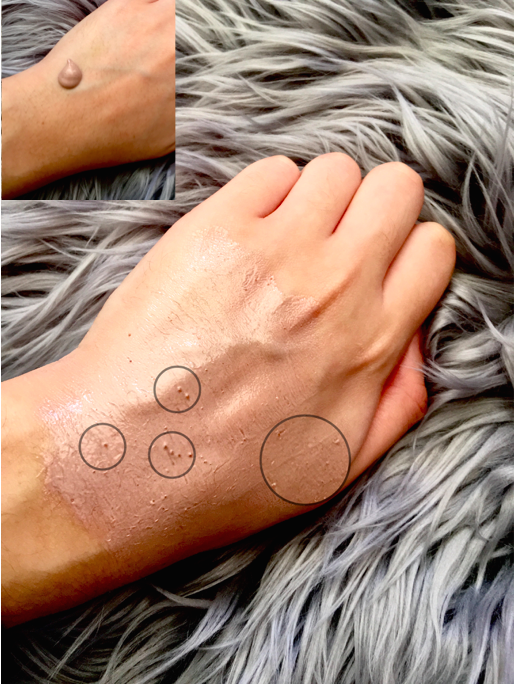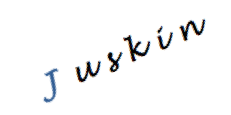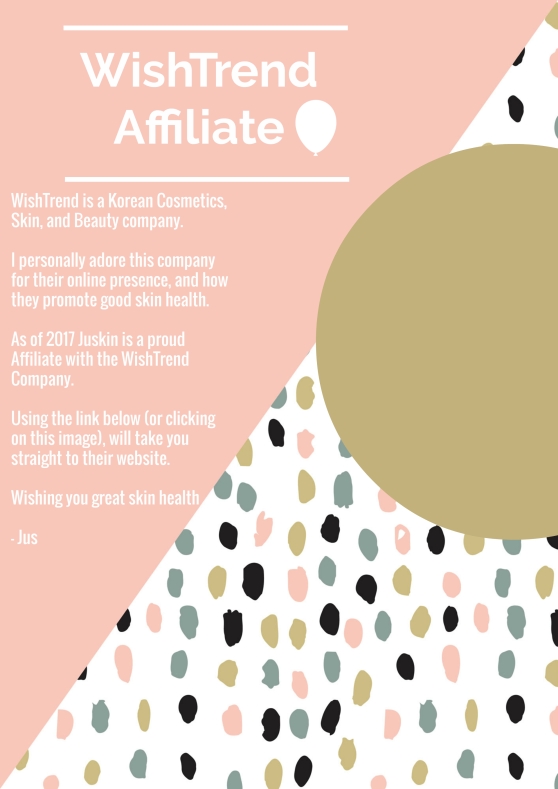The Skin Care


Innisfree Jeju Volcanic Melting Clay Mask (100g)
Claims
- A warm pore mask formulated with the melting clay of Jeju volcanic clusters to gently break and melt away the excess sebum in the pores for clear skin.

The Formulation
GLYCERIN, ZEOLITE, DIPROPYLENE GLYCOL, KAOLIN, VOLCANIC ASH, SILICA, POLYGLYCERYL-10 BEHENATE/EICOSADIOATE,COCOS NUCIFERA (COCONUT) OIL, JUGLANS REGIA (WALNUT) SHELL POWDER, CITRUS UNSHIU PEEL EXTRACT, ORCHID EXTRACT,CAMELLIA SINENSIS LEAF EXTRACT, CAMELLIA JAPONICA LEAF EXTRACT, OPUNTIA COCCINELLIFERA FRUIT EXTRACT, COCO-CAPRYLATE/CAPRATE, TITANIUM DIOXIDE (CI 77891), HYDROXYETHYL ACRYLATE/SODIUM ACRYLOYLDIMETHYL TAURATE COPOLYMER

The ‘Irritants’/ Comedogenic
- Cocos Nucifera (coconut) oil: This ingredient is extracted from the coconut’s kernel (the white flesh inside the coconut), and is a fantastic source of antioxidants and fatty acids to keep our skin healthy and supple. Coconut oil also acts as an emollient in cosmetics to stop water loss within our skin. Even though this type of oil is quickly absorbed into our skin, it is flagged as an irritant because Cocos Nucifera (coconut) oil can potentially clog our pores. However numerous of studies have shown the benefits of applying coconut oil to our skin: water binding, maintaining a healthy skin, and antibacterial properties. ( Source A & B)

The ‘Stars’
- Glycerin: Is found naturally topically on our skin, and helps our skin stay soft & supple. It ‘draws’ water from beneath our skin layers to the top, and this will result in this ingredient treating dry skin conditions topically. However, when too much pure glycerin is added in a product, this can actually be negative for you. Needless to say, too much of pure glycerin will continue to take water from our layers underneath our skin, until it is dehydrated.
- Zeolite: There really isn’t much information about this ingredient, but the suggested function of Zeolite pertains to how it aids in the detoxification process of the skin. Apparently, when applied topically Zeloite absorbs & exchanges it’s minerals into our skin, while transferring the bad toxins into the Zeloite.
- Kaolin: Is a soft clay that is normally white in texture, and also thick, making it perfect for forming a mask. The thick texture of this ingredient will allow other ingredients to be held together, and to aid in the delivery of ingredients deep down into our pores. In doing so, this clay will help nourish & soothe our skin. Additionally, this type of clay has particular minerals & nutrients that will help in reducing our oils. When introduced in a clay mask, kaolin will help cleanse & exfoliate our skin cells topically. This will help in detoxifying our skin, as it will allow our skin cells to regenerate topically. This ingredient also has multi purpose functions. When the clay starts to harden, it is able to help clear our pores, and this helps with problematic skin conditions. Scientific studies have shown that this detoxifying process is only shown if the mask stays on for about 20 – 30 minutes.
- Volcanic Ash: The scientific studies around volcanic ash seems virtually non – existent, but what is known about this ingredient is that it contains a good dose of Sulfur. This active mineral ingredient (Sulfar) is used for it’s anti-bacterial properties in cosmetics, and is normally seen in acne related products.
- Juglans Regia (walnut) Shell Powder: This ingredient acts as the physical exfoliant for this product, and uses tiny abrasive walnut pieces to scrub the face. However, walnuts as a physical exfoliator (same with sugar) should be avoided, since they have sharp edges and could potentially cause microscopic tears on the skin. (As you can see above, the walnut’s in this formulation are not abrasive at all!)
- Citrus Unshiu Peel extract: Is used in cosmetics as an extra dose of antioxidants and fragrance. Due to the scent provided by the Citrus Unshiu Peel, this can potentially be an irritant to the skin. Additionally, results from scientific studies have suggested that Citrus Unshiu Peel extract can help in brightening the skin by evening out the skin tones, and can also be a protective factor against photoaging (aging caused by the sun) (Source A).
- Orchid Extract: Used in cosmetics to provide an extra does of antioxidants to the skin. A scientific study also found that orchid extract has similar whitening efficacy to that of Vitamin C. The study was conducted on 48 females who used cosmetic products containing vitamin C on one side of the face (3% vitamin C), and Orchid extract on the other side of the face for 8 weeks. When comparing results, the researchers found Orchid extract was similar to that of Vitamin C in reducing pigmentation: Melasma & Lentinges, and thus has been linked to the ‘whitening’ of one’s face (Source B).
- Camellia Sinensis Leaf Extract: This ingredient refers to the leafs of green tea, and is one of the most researched antioxidants in skincare, however, keep in mind that green tea does not have the most potent antioxidant activity. Nonetheless, the most prominent consensus from applying Camellia Sinensis Leaf Extract on the skin are it’s anti – inflammatory and water binding properties. A study showed an increase in moisture on the skin after prolonged use of green tea extracts applied topically on the skin (6% green tea extract used). While other studies have reported anti – aging effects, anti – bacterial, and anti- acne effects (reduces sebum production with only 3% green tea extract used). Moreover, a recent study on animals found the topical application of green tea extract on an open wound showed an increase in collagen cells, a decrease in inflammatory cells, and a reduction in scar tissue. Even though this study is not tested on humans just yet, this study is possibly lighting the way into a new use of green tea extracts for humans. Can this ingredient be used for wound healing/lesions on our skin? Other uses for this ingredient is noted here.
- Camellia Japonica Leaf Extract: The extracts from this type of leaf is used in skin care for it’s strong antioxidant properties. Additionally, a recent study have suggested anti-aging properties from Camellia Japonica Leaf Extract. The study explains that under extreme oxidative stress from the environment (UV Rays, smoke, heat exposure) our body over produces Reactive Oxygen Species (ROS). However, ROS is a natural byproduct produced by our body and they have an important role in cell communication, but too much of it can be damaging to the cell structures. The results from this study show that Camellia Japonica Leaf extract can reduce the oxidative stress experienced in our body’s, and thus limits the over production of ROS. As a result, with the reduction of ROS ‘floating’ in our body’s, they are no longer able to damage our cell structures.
- Opuntia Coccinellifera Fruit Extract: Is extracted from a cactus called the Barbary Fig (also known as the Prickly Pear), and is used in skincare for it’s suggested function of promoting ceramide synthesis, and for it’s antioxidant properties.
- Coco-caprylate/Caprate*: Another natural emollient ingredient that is derived from coconut oil. Coco-caprylate/Caprate coats the skin to provide hydration, prevent water loss, and to soften the skin. Unlike Cocao butter Coco-caprylate/Caprate is not a source of antioxidants.

Product Review
” A gentle clay mask that can be used multiple times throughout the week, and draws out impurities efficiently and subtly over time ”
Scent (5/5): This skincare product smells likes Cocoa, and I absolutely adore it! The scent is very minimal, and wafts slightly upwards towards your nose.
Texture of the product(5/5): I am going to start off and say that this isn’t your normal type of clay mask. Normally with clay masks they dry solid onto the face, cracking, and leaving your skin tight after application. The Innisfree Jeju Volcanic Melting Clay Mask uses a brown creamy mousey texture, and it doesn’t solidify on the face like a typical clay mask. It instead stays in the same creamy state! The formulation also uses walnut shell powder to provide a gentle exfoliation (see photo above!). Due to the micro tears that some exfoliators can inflict, I normally stay away from substances like raw walnuts & sugars that can be too abrasive on the skin. However, the walnut shell powder is so finely mild that it provides a very sparse and gentle exfoliation.
Application(5/5): There’s nothing bad I can say about applying Innisfree Jeju Volcanic Melting Clay Mask on my face. It goes on smooth, and it provides a gentle exfoliation while doing so. When taking this ‘clay’ mask off, it is as simple as splashing water on your face (no hassle at all! It just falls right off). Also when you apply this clay mask on your face, it starts to warm up! In my opinion, this is pretty amazing and good for a cold night.
Quality of product (4/5): If you managed to read above, then you know that I absolutely adore this product (from scent, to texture, and to application!). The Innisfree Jeju Volcanic Melting Clay Mask gently exfoliated my face, while providing it with some useful nutrition & (some) moisture.
I can’t say this is a particularly strong clay mask, and from the formulation and texture I don’t think it is marketed as one. I also did not see any inflammatory effects from this mask, nor did it extremely clean my pores, or cause me to get pimples. Additionally, the Innisfree Jeju Volcanic Melting Clay Mask did not leave my face squeaky clean as other clay masks.
I however believe that this clay mask is meant to work by subtly drawing impurities out of our skin with the use of Koalin & Zeolite. The clay mask claims to gently break and melt away excess sebum in our pores, and I can defiantly attest to this. These effects can’t always be seen (sadly), but I do believe that the Innisfree Jeju Volcanic Melting Clay Mask does tackle this task subtly (gently) and efficiently over time, but not as strong as other clay masks. Due to this, I think this mask can be used multiple times within the week (this clay mask is so gentle, and not abrasive at all!). This is defiantly my go to clay mask from now on. I love that the Innisfree Jeju Volcanic Melting Clay Mask is so gentle, and filled with skin loving ingredients to nourish my skin.
Overall Performance/ Effects:
- Amazing scent (Cocoa)
- Warms up as soon as it touches the face!
- This clay mask is a brown mousey cream texture, and it remains this texture throughout the application
- Super easy to wash off the face
- Gently exfoliates the face with the use of walnut shell powder
- This clay mask has a ‘weak’ (gentle) process of drawing out impurities, than other clay masks. I personally don’t mind this because it does not strip the face dry.
- If you want that squeaky clean, and strong tightening effect, then this clay mask is not for you. It is really gentle and not abrasive.
- Gently breaks and melts away sebum in the pores
- Did not cause me to break out
- Did not help with my acne
Duration of wear: 20/1/2017 – 3/2/2017
Repurchase: Yes!
Overall rating: 4.75/5
Price: $14 AUS
Disclaimer:
All products are purchased with my money. I am not sponsored to review any products, nor do i have affiliate links. I am however a proud affiliate with WishTrend, and I truly adore how they promote good skin health. All opinions are 100% honest, and written from my personal experience.
Irritants are flagged from skin care database: CosDNA
Cosmetic ingredients information was accessed from public domains (unless referenced in-text). More detailed information can be found on:TruthInAging& Paula’s Choice
Since word press is a free to use platform, you might occasionally you might see an ad on my page. This is placed by WordPress and not by me.




Oh too bad. I got a tub from Seoul and was hoping it would refine pores or clean out black/whiteheads. Guess it’s probably good to use in winter when it’s more drying.
LikeLike